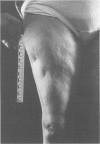Abstract
Lipoatrophy and lipohypertrophy were the most frequently reported local complications of conventional insulin therapy. Early reports following the introduction of highly purified insulins suggested a reduction in the frequency of lipohypertrophy and lipoatrophy. Since highly purified insulins have been in common usage for 10 years, the present frequency of these complications was assessed in a study of 281 insulin treated diabetics. Lipohypertrophy was recorded in 76 (27.1%) patients including 3 with associated lipoatrophy. Lipoatrophy was found in 7 (2.5%) cases (3 porcine and 4 bovine insulin treated), 4 of which had only ever used highly purified insulins. Despite the introduction of highly purified insulins, lipohypertrophy and lipoatrophy remain prevalent in insulin treated patients. This common complication may be limited by routinely inspecting injection sites.
Full text
PDF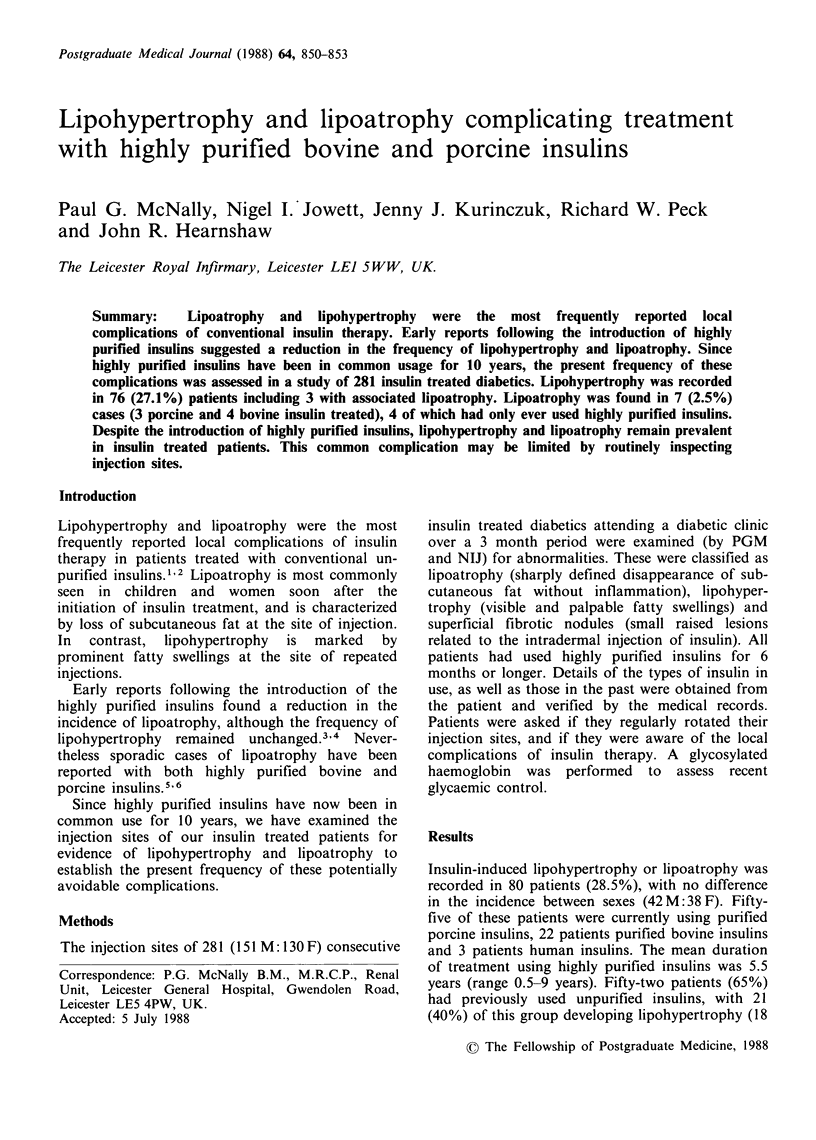
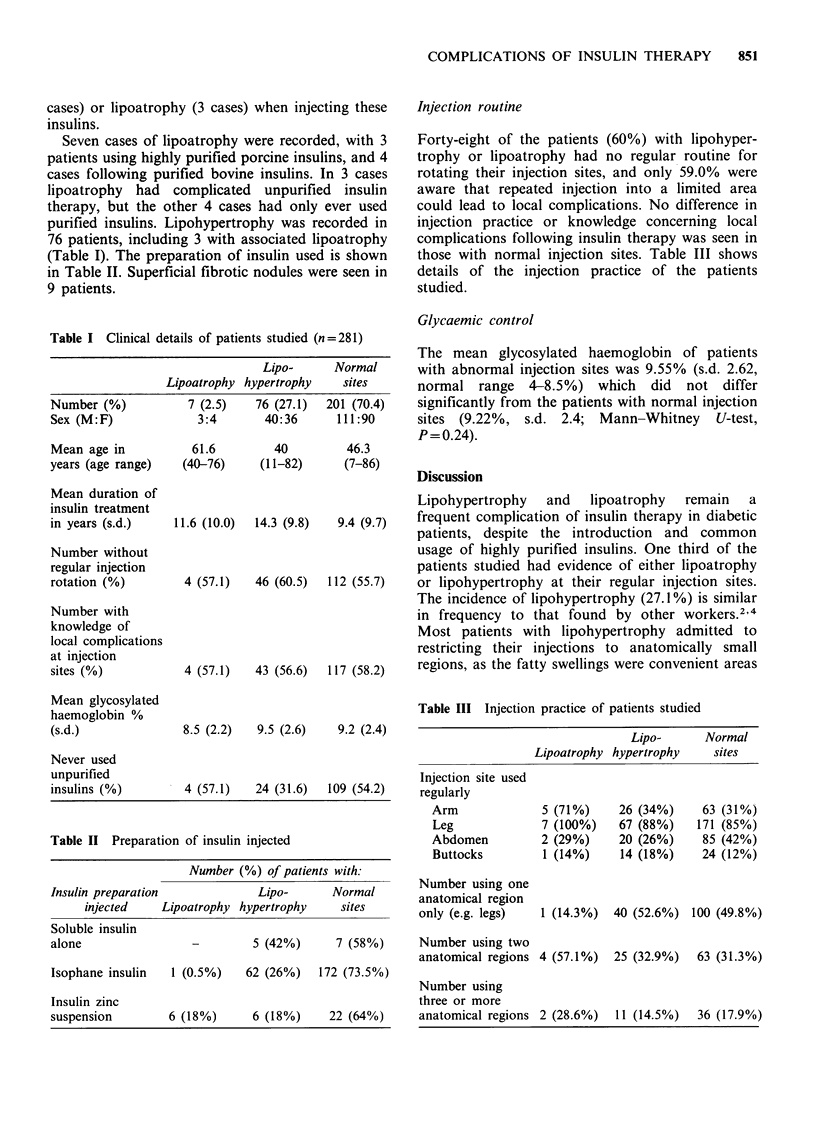
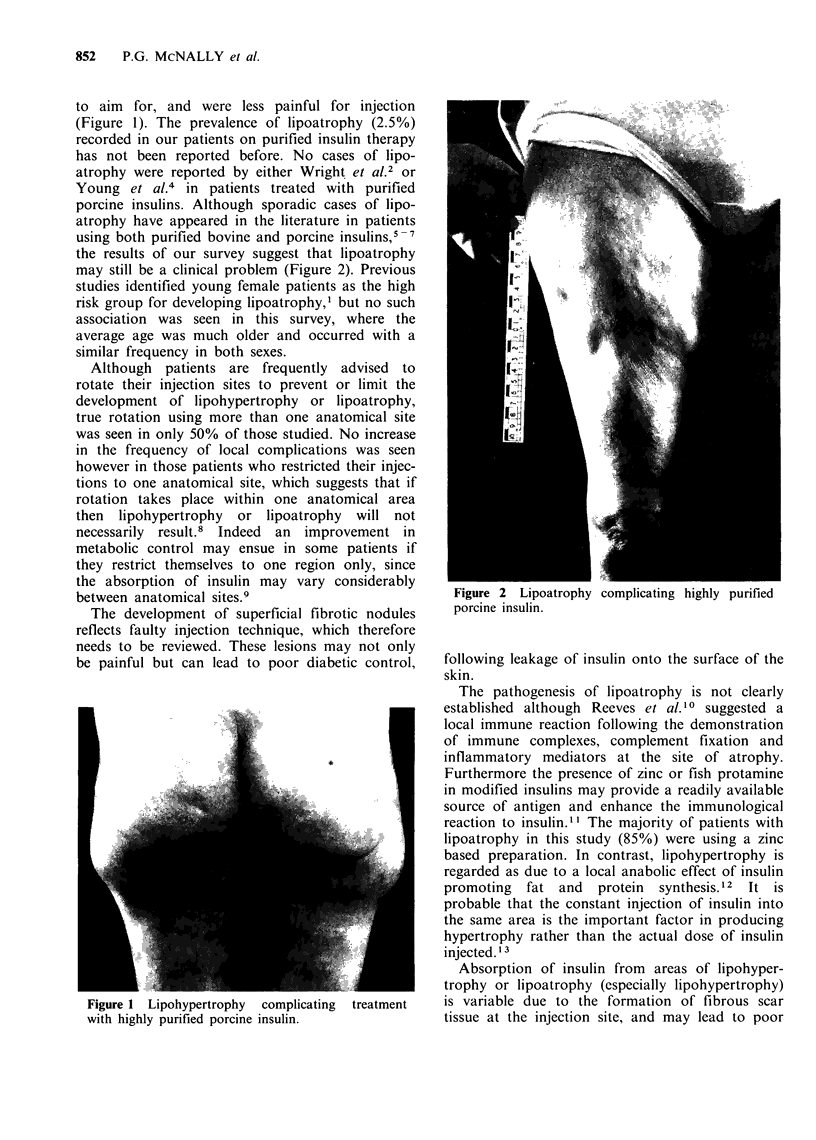
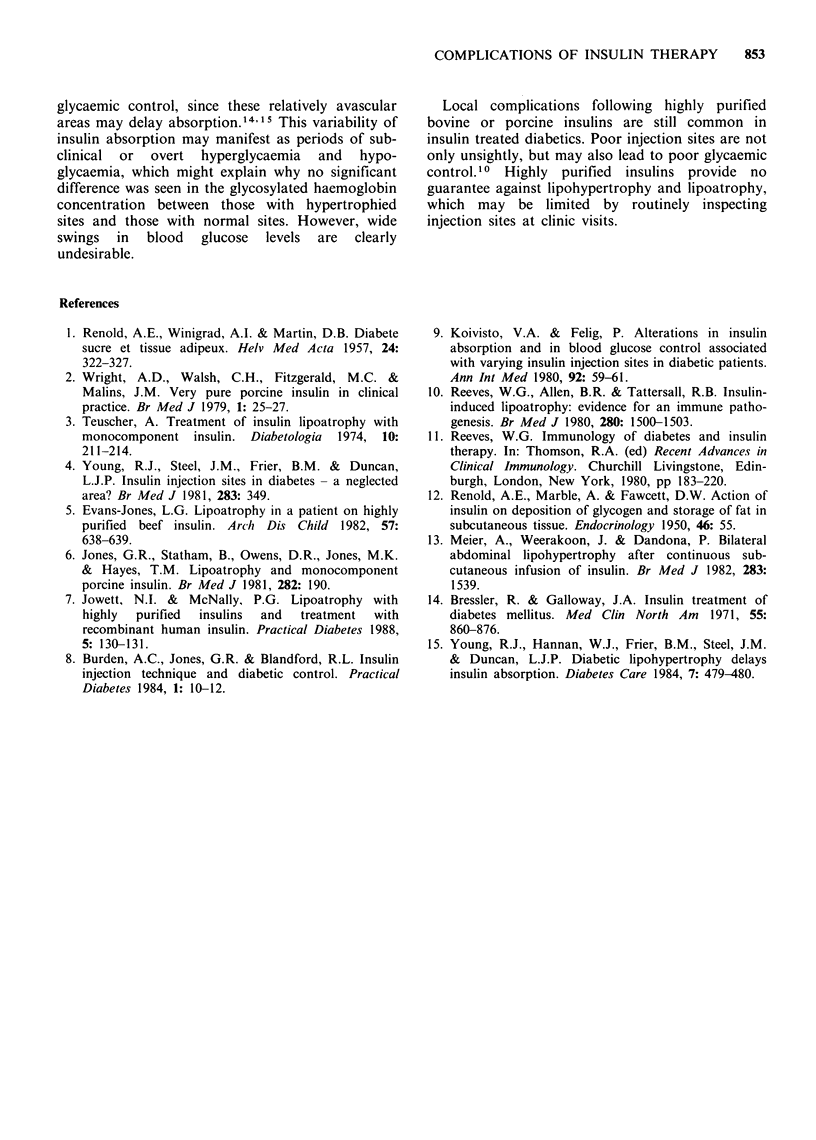
Images in this article
Selected References
These references are in PubMed. This may not be the complete list of references from this article.
- Bressler R., Galloway J. A. Insulin treatment of diabetes mellitus. Med Clin North Am. 1971 Jul;55(4):861–876. doi: 10.1016/s0025-7125(16)32481-6. [DOI] [PubMed] [Google Scholar]
- Evans-Jones L. G. Lipoatrophy in a patient on highly purified beef insulin. Arch Dis Child. 1982 Aug;57(8):638–639. doi: 10.1136/adc.57.8.638-b. [DOI] [PMC free article] [PubMed] [Google Scholar]
- Jones G. R., Statham B., Owens D. R., Jones M. K., Hayes T. M. Lipoatrophy and monocomponent porcine insulin. Br Med J (Clin Res Ed) 1981 Jan 17;282(6259):190–190. doi: 10.1136/bmj.282.6259.190. [DOI] [PMC free article] [PubMed] [Google Scholar]
- Koivisto V. A., Felig P. Alterations in insulin absorption and in blood glucose control associated with varying insulin injection sites in diabetic patients. Ann Intern Med. 1980 Jan;92(1):59–61. doi: 10.7326/0003-4819-92-1-59. [DOI] [PubMed] [Google Scholar]
- Mier A., Weerakoon J., Dandona P. Bilateral abdominal lipohypertrophy after continuous subcutaneous infusion of insulin. Br Med J (Clin Res Ed) 1982 Nov 27;285(6354):1539–1539. doi: 10.1136/bmj.285.6354.1539. [DOI] [PMC free article] [PubMed] [Google Scholar]
- RENOLD A. E., WINEGRAD A. I., MARTIN D. B. Diabète sucré et tissu adipeux. Helv Med Acta. 1957 Oct;24(4):322–327. [PubMed] [Google Scholar]
- Reeves W. G., Allen B. R., Tattersall R. B. Insulin-induced lipoatrophy: evidence for an immune pathogenesis. Br Med J. 1980 Jun 21;280(6230):1500–1503. doi: 10.1136/bmj.280.6230.1500. [DOI] [PMC free article] [PubMed] [Google Scholar]
- Teuscher A. Treatment of insulin lipoatrophy with monocomponent insulin. Diabetologia. 1974 Jun;10(3):211–214. doi: 10.1007/BF00423037. [DOI] [PubMed] [Google Scholar]
- Wright A. D., Walsh C. H., Fitzgerald M. G., Malins J. M. Very pure porcine insulin in clinical practice. Br Med J. 1979 Jan 6;1(6155):25–27. doi: 10.1136/bmj.1.6155.25. [DOI] [PMC free article] [PubMed] [Google Scholar]
- Young R. J., Hannan W. J., Frier B. M., Steel J. M., Duncan L. J. Diabetic lipohypertrophy delays insulin absorption. Diabetes Care. 1984 Sep-Oct;7(5):479–480. doi: 10.2337/diacare.7.5.479. [DOI] [PubMed] [Google Scholar]
- Young R. J., Steel J. M., Frier B. M., Duncan L. J. Insulin injection sites in diabetes--a neglected area? Br Med J (Clin Res Ed) 1981 Aug 1;283(6287):349–349. doi: 10.1136/bmj.283.6287.349. [DOI] [PMC free article] [PubMed] [Google Scholar]



